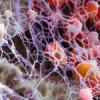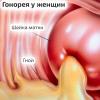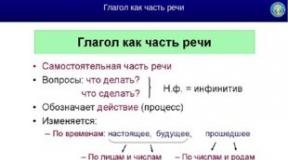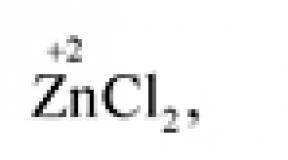Space Ripples: The Nobel Prize in Physics was awarded for the study of gravitational waves. The Nobel Prize in Physics was awarded to contribute to the study of gravitational waves Nobel Prize in Physics Black Holes
All our understanding of the processes occurring in the universe, the idea of \u200b\u200bits structure was based on the study of electromagnetic radiation, other words - photons of all possible energies that reach our devices from the depths of the cosmos. But photon observations have their limitations: electromagnetic waves of even the highest energies do not reach us from too distant areas of space.
There are other forms of radiation - neutrino flows and gravitational waves. They can talk about what devices will never see the electromagnetic waves. In order to "see" neutrino and gravitational waves, we need fundamentally new devices. For the creation of a gravitational wave detector and experimental proof, their existence this year was awarded the Nobel Prize in Physics Three American Physicists - Rainer Weiss, Kip Thorn and Barry Barrish.
From left to right: Rainer Weiss, Barry Barrish and Kip Thorn.
The existence of gravitational waves is provided for by the overall theory of relativity and was predicted by Einstein back in 1915. They arise when very massive objects face each other and generate the perturbations of space-time, dates from the speed of light in all directions from the place of origin.
Even if the event that has breeding the wave is huge - for example, two black holes have collided - the impact that the wave puts on space is extremely small, so it is difficult to register it, for this we need very sensitive devices. Einstein himself believed that the gravistant, passing through matter, affects her so little, which is not led by observation. Indeed, the most effect that the wave has on matter is quite difficult to catch, but you can register indirect effects. That was what the American astrophysics Joseph Taylor and Russell Hals, measured the radiation of the dual-star-pulsar PSR 1913 + 16 and proven that the deviation of the period of its pulsation from the calculation is explained by the loss of energy taken by the gravitational wave. For this they received the Nobel Prize in Physics in 1993.
On September 14, 2015, LIGO is a laser-interferometric gravitational-wave observatory - for the first time directly registered a gravitational wave. By the time the wave reached the Earth, it was very weakened, but even this weak signal meant a revolution in physics. In order for this to be possible, it took labor thousands of scientists from the twenty countries that built LIGO.
To check the results of the fifteenth year, took several months, so they were published only in February 2016. In addition to the main discovery - confirmation of the existence of graviliba - in the results there are several more: the first evidence of the existence of the black holes of the middle mass (20-60 solar) and the first proof that they can merge.
To get to the Earth, the graville was required more than a billion years far away, outside of our galaxy, two black holes crashed into each other, 1.3 billion years have passed - and Ligo told us about this event.
The energy of the gravitational wave is huge, but the amplitude is incredible small. It is like measuring the distance to a distant star with an accuracy of the tenth of a millimeter. Ligo is capable of it. The concept was developed by Weiss: in the 70s, it calculated what earthly phenomena can distort the results of observations, and how to get rid of them. Ligo is two observatory, the distance between which is 3002 kilometers. The gravitational wave passes this distance for 7 milliseconds, so two interferometers during the passage of the wave clarify each other's indicators.
 Two Ligo Observatory, in Livingstone (Louisiana) and Hanford (Washington) are located at a distance of 3002 km from each other.
Two Ligo Observatory, in Livingstone (Louisiana) and Hanford (Washington) are located at a distance of 3002 km from each other.
Each observatory has two four-kilometer shoulders, outgoing from one point at right angles to each other. Inside, they have an almost perfect vacuum. At the beginning and at the end of each shoulder - a complex system mirrors. Passing through our planet, the gravitational wave slightly compresses the space where one sleeve is laid, and stretches the second (without waves the length of the sleeves is strictly the same). From the crossing of the shoulders produce a beam of a laser, it is separated by it and allowed to be reflected in the mirrors; Having passed its distance, the rays are encountered in the crossroads. If this happens simultaneously, then the space-time is calm. And if one of the rays was required to pass the shoulder more time than the other, it means that the gravitational wave lengthened his path and reduced the path of the second beam.
 The scheme of the LIGO Observatory.
The scheme of the LIGO Observatory.
Ligo developed Weiss (and, of course, his colleagues), Kip Thorn - a leading global expert in the theory of relativity - performed theoretical calculations, Barry Barish joined the LIGO team in 1994 and turned a small one - just 40 people - a group of enthusiasts in a huge international collaboration LIGO / VIRGO, thanks to the well-coordinated work of the participants in which the fundamental propagation was possible, implemented twenty years later.
Work on gravitational wave detectors continues. The first registered wave followed the second, third and fourth; The last "caught" not only LIGO detectors, but also recently launched European Virgo. The fourth gravitational wave, unlike the three previous, was not born in absolute darkness (as a result of the fusion of black holes), and with full illumination - when the neutron star explosion; Space and terrestrial telescopes registered the optical source of radiation in that area where the gravitational wave came from.
The role of Barisha, also teacher Kalteha, is that he combined many projects into a single LIGO and assumed management functions. In comparison with other co-founders, LIGO Thorn is not only one of the main world experts on the general theory of relativity (and, in particular, on the theory of gravity), but also one of the most famous science popularizers in the world. He became one of the inspirationors of the creation of the film "InterSellar", during the filming of which also acted as a scientific consultant and executive producer of paintings. Thus, Thorn is the first Hollywood producer who received the Nobel Prize.
2. Russian participation
Being mainly by the American project, Ligo unites several dozen scientific groups in which about 1 thousand scientists from around the world work. The project participates two Russian groups - one under the leadership of the Moscow professor Valery Mitrofanov, the other is headed by Nizhny Novgorod scientist Alexander Sergeev.
Sergeyev, who from September 27 is headed by the Russian Academy of Sciences, RBC that the basis of the discovery was laid back in 1962, the Soviet scientist Vladislav was empty, which proposed a diagram of using a laser for fixing gravitational waves. Nevertheless, the opening of 2015 is, according to Sergeeva, the "triumph of human thought and a triumph of the equipment."
Professor MSU Mitrofanov, another participant LIGO, which exactly the three Nobel laureate made the greatest contribution to the creation of the project. "Register such a weak signal - a dream of physicists. Thanks to the efforts of the entire LIGO and laureate team, it was possible to do it in the end, "he said in a conversation with RBC.
Rainer Weiss and Kip Thorn (from left to right)
3. The essence of the opening
The task of LIGO is to confirm in practice the existence of gravitational waves, which Albert Einstein told in his general theory of relativity in 1916. Gravitational waves are the oscillations of space-time (physics also say "ripples on the tissue-time tissue"), produced by the movement in the universe massive bodies with variable acceleration. Each of the two LIGO Observatory is equipped with a detector of gravitational waves placed in a vacuum and capable of fixing fluctuations in the size of thousands of times less than the size of the atomic nucleus, the Nobel Committee says. The distance 3002 km between the objects of the light wave overcomes in a straight line for 10 ms. Since it is assumed that the gravitational wave also applies to the speed of light, changing the value of the wave passage time through one observatory and the other is intended to help find the direction of movement, and therefore the source of the wave.
Ligo recorded gravitational waves in the morning of September 14, 2015. For several months, LIGO experts together with colleagues from the Franco-Italian center Virgo analyzed the information received. In February 2016, scientists presented the results of the study: the September 14 event was indeed the first direct supervision of gravitational waves. LIGO devices, stated a statement, recorded the wave from the merger of two black holes at a distance of 1.3 billion light years from the ground.
4. New tool Penetration into the universe
The detection of gravitational waves in the Nobel Committee's message is called "Revolution in Astrophysics", which provides fundamentally new way Studying space. "A whole treasure of discoveries is waiting for the one who will be able to catch these waves and read the message hidden in them," the press release says.
Over the past two years, LIGO and VIRGO physics also recorded the movement of gravitational waves. The last observation took place on August 14, 2017, was officially announced this last week. Press secretary LIGO David Schukeker noted that the new round of joint surveillance of experts LIGO and Virgo is scheduled for autumn 2018 and on it such discoveries "are expected once a week or more."
As Professor Sheila Rowan noted from the University of Glasgow, the collaboration of Ligo and Virgo allowed "to expand the amount of data that we get in the future and which would help us better understand the universe."
Member Ligo Professor Mitrofanov told RBC that the detection of gravitational waves opens up a new science area. "We used to look at what is happening in distant space, mainly in the electromagnetic range. And now such a channel of information has been added as gravitational waves, and he has much more opportunities. They go from the first moments after the big explosion when our universe was formed, "he said.
On the potential possibilities of mankind after the opening of gravitational waves, he was torn in his book "InterSellar: Science for Frame". It was published in 2015, shortly after the InterSellar blockbuster exit and shortly before the opening of Ligo.

Executive Director LIGO David Reike (Photo: Gary Cameron / Reuters)
5. Science and Cinema
In the sphere scientific interests Thorny finds the search for the possible practical application of these knowledge. For example, we are talking about moving in time and space. Since the 1980s, Thorn studies the likelihood of the existence of so-called wormwort, or "mole-hole", - peculiar "tunnels" in space that allow you to instantly move from one point to another. Einstein wrote about the likely existence of such "tunnels", explaining this series of provisions of its relativity theory. Thorn, developing this theory, is one of the authors of the hypothesis of "passable mobbo holes." Thorn assures that at the current stage of technological development, interstellar flights are impossible. "With the technologies of the XXI century we are unable to achieve other star Systems faster than thousands of years of the road. Our only ghost hope for interstellar flight is a wormochin or a different limit form of curvature space-time, "he writes in the last book. Thorn hopes that a breakthrough in the study of gravitational waves will help to approach the solution of this issue.
His theoretical and practical workers of Thorn visualized in the film "InterSellar", which was released on the screens in the fall of 2014. "I fell a happy time to participate in its creation from the very beginning, helping [director Christofera] Nolan and his colleagues to wear the tissue of the narrative component of true science," wrote Thorn.
In fact, Thorn acted as the creator of the idea of \u200b\u200bthe film itself, and during the work on the picture I tried to simulate existing gravitational theories. Starting in 2005, work on the film, Torn put the director Stephen Spielberg, who was originally going to take the picture, two conditions. The events of the film should not contradict the laws of physics, and the physical theories used in the scenario must be scientifically supported, that is, at least part of the scientific community are taken.
6. Friends-rivals
For Thorn, the awarding of the Nobel Prize has become at least a ninth scientific reward for a year and a half from the moment of publishing a message about the opening of LIGO. Nevertheless, the study of gravity he is engaged in the last half a century.
Almost from the very beginning of its research activities, Thorn is friendly with another famous popularizer of science and researcher of the Universe of Stephen Hawking. The views of two scholars on space phenomena sometimes coincided, sometimes diverged. Opportan friends regularly conclude public issues on scientific matters. The last such dispute, which began in 1991 (for experts - Thorn allowed the existence of naked singularities, Hawking - no) ended in 1997 by the victory of Kipu Torn. He received a £ 100 from the opponent and a certain object of clothing with the inscription in which Stephen recognized defeat (other details in his story about this history of Kip Thorn does not lead).
Now the rivalry of two shining world science becomes still dramatic: Stephen Hoking Nobel Prize is not yet. However, after the success of InterStellar, who received Oscar for the best visual effects (to which Thorn had a direct attitude), Thorn said he was preparing a new science fiction film - and this time with Hoking. He told about it in November 2016 in the lecture on the Physician MSU.
Winners of the Nobel Prize in Physics 2017
Rainer Wece. Born in 1932 in Berlin. After the arrival of the Nazis to power in Germany, Weiss's parents moved first to Czechoslovakia, then in the United States. In 1955 he received a bachelor's degree in Mit, then graduated from a doctoral student at Princeton University, since 1964 he teaches Mit. He is the author of dozens of scientific work on astrophysics, gravity and the use of lasers.
Kip Thorn Born in 1940 in Utah in the Mormon family. Now, however, the scientist calls himself an atheist. In 1962 he graduated from undergraduate in Caltech, then defended his thesis on geometrodynamics (the reduction of physical objects to geometric) in Princeton University. Since 1967, he teaches theoretical physics in Caltech. The author of several scientific theories and works on astrophysics.
Barry Barisha Born in Nebraska in 1936. Soon after his birth, the family moved to California, where Barisch entered the University of Berkeley, and since 1963 he worked in Caltech. The scope of his scientific interests includes experimental high-energy physics. Since the 1980s, he is interested in creating equipment for the capture of magnetic and other waves, and in 1994 he was an inspirer to create a unified project LIGO.
The Nobel Prize in Physics for 2017 was awarded the creators of the international collaboration of Ligo, thanks to which the first gravitational waves were discovered - Physics Rainer Weiss, Barry Barisha and Kipu. Half from the amount of the award went to Weiss, Barisch and Thorn received a quarter.
"Of course, a very honored Nobel Prize. Compared with prizes recent years - One of the most honored premiums, because it is a fundamental discovery, which was waiting for 100 years after Einstein predicted the existence of gravitational waves. The scientists who received a prize made a decisive contribution to the construction and creation of a gravitational antenna at one time, "Gazeta.Ru commented on the presentation of the award Russian physicist, Professor Mikhail Gorodetsky. -
A lot of countries participate in LIGO project, many teams from different institutions, and Russia, including. In Russia, two scientific groups: one in Moscow State University, the other in the Nizhny Novgorod Institute of Applied Physics. That is, and Russian scientists have contributed to this discovery. This is really the work of the century. "
Gravitational waves - changes in the gravitational field, propagating like waves. Their existence assumed many scientists, including Albert Einstein. For the first time, the American physicist Joseph Weber, the founder of gravitational wave astronomy, was reported on the discovery of such waves in 1969. According to him, he managed to catch them with the help of a resonant detector - a mechanical gravitational antenna.
Although none of the further experiments confirmed the Weber's message, it caused a rapid growth in the work in this direction in many countries.
Among the experimenters turned out to be.
Gravitational waves were discovered on September 14, 2015 at the LIGO - laser-interferometric gravitational and wave observatory. The signal proceeded from the fusion of two black holes with masses 36 and 29 of the solar masses at a distance of about 1.3 billion light years from the ground. For a fraction of a second, about three, the solar masses turned into gravitational waves, the maximum radiation power of which was about 50 times more than from the entire visible universe.
The discovery of scientists reported on February 11, 2016, it was made during the engineering cycle of the equipment (calibration work). This means that the detection of gravitational waves occurred before the start of the scientific launch.
And in June 2016 it became about the second case of the registration of gravitational waves, they were discovered at once two LIGO detectors on December 26, 2015.
In contrast to the signal registered when the first detection of gravitational waves, which was clearly visible against the background of noise, the second signal was weaker and not clearly visible. After analyzing the character of the smallest fluctuations in the trial masses of detectors, scientists concluded,
that the detected gravitational waves were again generated by two black holes, this time lighter - the masses of 14 and 8 of the mass of the sun.
If the first detection of gravitational waves confirmed the prediction of the general theory of relativity, made in 1915, the registration of two signals for four months of the first cycle of observations of Advanced Ligo detectors will predict how often gravitational waves will be detected in the future.
The LIGO project was founded in 1992, and observations of the Observatory began in 2002.
"Kip Thorn from Kalteha and Rainer Weiss from the Massachusetts Institute of Technology organized a consortium of the two largest universities in the United States, received funding for the US National Science Foundation. After a while, when it became clear that even the United States would not be able to draw such a project, an association of international efforts occurred, "said Gorodetsky.
Today, the collaboration includes more than a thousand scientists from universities in 15 countries. Russia is represented by two scientific teams: a group of the Physical Faculty of Moscow state University them. M.V. Lomonosov and a group of the Institute of Applied Physics in Nizhny Novgorod.
The founder of the Moscow group LIGO was Russian physicist Vladimir Braginsky, in March 2016.
From the very beginning, the main efforts were aimed at improving the sensitivity of gravitational-wave detectors, the definition of fundamental quantum and thermodynamic lifesters of sensitivity, on the development of new measurement methods. Theoretical and experimental studies of Russian scientists have found an incarnation when creating detectors who have directly observe gravitational waves from the merger of two black holes.
Currently, the team of the Scientific Group of Moscow University is actively involved in the development of the next-generation gravitational and wave detectors, which will replace the current detectors and provide a significant increase in their sensitivity, which will allow almost daily to detect gravitational wave signals.
Weiss, Thorn and Baris were considered one of the main candidates for the Nobel Prize last year, but too late declared the opening - accepts applications only until January 31.
The most likely applicants for the Nobel Prize in Physics were called Mitchell Faigebaum for opening in the field of nonlinear and chaotic systems, Russian astrophysicist for a deep contribution to the understanding of the Universe and Faeadon Avoris, Paul Makuen and Cornelis Decker, which made a significant contribution to carbon nanotubes, graphene, graphene Nanolent and their use in electronics.
In 2016, the Nobel Prize laureates, James Taulz, from the University of Washington, Frederick Haldin from Princeton and from Brown University for the development of the science of topological phase transitions.
Creator fertilizer and chemical weapons
One of the most controversial owners of the Nobel Prize was Fritz Gaber (Fritz Haber). The chemistry premium was awarded to him in 1918 for the invention of the ammonia synthesis method - a discovery that is crucial for the production of fertilizers. However, it is also known as the "Father of Chemical Weapons" due to works in the field of applying a chlorine-poison gas used during World War II.

Deadly opening
Another German scientist, Otto Gan (Otto Han) - in the photo in the center - was awarded "Nobeli" in 1945 for the opening of the splitting of the atomic nucleus. Despite the fact that he never worked on the military application of this discovery, it directly led to the development of nuclear weapons. Gan received a premium a few months after the nuclear bombs were reset on Hiroshima and Nagasaki.

Friedman to Obama: The most ambiguous Nobel laureates
Breakthrough
Swiss Chemist Paul Muller received a premium on medicine in 1948 for the discovery that DDT can effectively kill insects spreading such diseases like malaria. The use of a pesticide saved millions of lives in one time. However, later environmentalists began to say that DDT represents a threat to human health and harms nature. Today, its use is prohibited worldwide.

Friedman to Obama: The most ambiguous Nobel laureates
Uncomfortable award
Because of its explicit and indirect political color, the Peace Prize is perhaps the most conflicting from all Nobel awards. In 1935, the German pacifist Karl von Ossietsky (Carl Von Ossietzky) received it for exposing the secret re-equipment of Germany. Ossetsky himself was in prison on charges of treason, and the outraged Hitler accused the Committee in interference in the internal affairs of Germany.

Friedman to Obama: The most ambiguous Nobel laureates
Premium (Possible) World
The decision of the Norwegian Committee to award the world award of the US Secretary of State Henry Kissinger and the leader of the Northern Vietnam Le Soch TKHO in 1973 encountered tough criticism. The Nobel Prize was to become a symbol of the recognition of merit in achieving the cease-fire during the Vietnamese War, but Le Soch TKHO refused to receive it. War in Vietnam continued for two more years.

Friedman to Obama: The most ambiguous Nobel laureates
Libertarian and dictator
The defender of the free market Milton Friedman is one of the most controversial recipients of the Nobel Prize of the world in economics. The decision of the Committee in 1976 caused international protests due to Friedman's ties with the Chilean dictator Augusto Pinochet. A year earlier, Friedman really visited Chile, and critics argue that his ideas inspired the regime where torture was used and thousands of people were killed.

Friedman to Obama: The most ambiguous Nobel laureates
Vain hopes
The Peace Prize, which in 1994 divided the Palestinian leader of Yasser Arafat, Israeli Prime Minister Itzhak Rabin and Israeli Minister of Foreign Affairs Shimon Perez was to serve as an additional incentive for peaceful conflict resolution in the Middle East. Instead, further negotiations failed, and Rabin was killed by an Israeli nationalist a year later.

Friedman to Obama: The most ambiguous Nobel laureates
Terrible memoirs
Human rights activist Rigobert Menech, defending the interests of the Mayan people, received the world award in 1992 "for the struggle for social justice." Subsequently, this decision caused a lot of disputes, since in its memoirs, falsifications were allegedly discovered. The atrocity of the genocide of indigenous peoples of Guatemala, described by her, made it famous. However, many are convinced that she in any case deserved awards.

Friedman to Obama: The most ambiguous Nobel laureates
Premature award
When the Peace Prize in 2009 was awarded Barack Obama, many were surprised, including him. By that time less than a year as the president, he received a premium for "huge efforts to strengthen international diplomacy." Critics and some supporters of Obama considered that the award was premature, and he received it even before he had a chance to make real steps.

Friedman to Obama: The most ambiguous Nobel laureates
Posthumous award
In 2011, the Nobel Committee called Prize Laureat on Jul Hoffman Medicine, Bruce Bethler and Steinman Ralph for their discovery in the field of studying the immune system. The problem was that a few days before that Steinman died of cancer. According to the rules, the premium is not available posthumously. But the Committee still awarded her Steinman, substantiates that he was not yet known about his death.

Friedman to Obama: The most ambiguous Nobel laureates
"The greatest omission"
The Nobel Prize is disputes not only because of the one who she was awarded, but also because someone did not receive it. In 2006, the member of the Nobel Committee, Gair Lundestad, said that "the greatest omission for the whole of our 106-year-old history was the fact that Mahatma Gandhi never received the Nobel Prize of the world."
Awards awarded American scientists Rainer Weiss, Kip Thorn and Barry Baris
American scientist Rainer Weiss
Moscow. October 3. Website - Nobel Prize in Physics In 2017 received American scientists: Rainer Weiss, Professor of Physics of the Massachusetts Institute of Technology, as well as Kip Thorn and Barry Baris, Professor of Physics of the California Institute of Technology, with the wording "for a decisive contribution to the LIGO detector and for observing gravitational waves ".
Weiss (85 years old), Thorn (77 years old) and Barisha (81 years old) were considered the most important applicants for the Nobel Prize in Physics since the announcement of the discovery of gravitational waves in 2016 by the collaborations of Ligo and Virgo.
The Nobel Prize (@nobelprize) October 3, 2017
Ligo is two gravitational observatory, located 3 thousand km from each other - one near Livingstone (Louisiana), the other - near Hanford (Washington).
Laser interferometers are assembled according to the G-scheme, consist of two perpendicularly located optical shoulders. Their length is four kilometers. As N + 1 explains, the laser beam split into two components that pass through the pipes are reflected from their ends and unite again. If the shoulder length changed, the nature of the interference between the rays is changed, which is fixed by detectors. A large distance between observatory allows you to see the difference in the arrival time of gravitational waves - from the assumption that the latter spread at the speed of light, the difference between the arrival of the arrival reaches 10 milliseconds.
Physics Prize - 2016
Last year, the Nobel Prize in Physics received David Talez, Duncan Haldane and Michael Kosherlitz "for theoretical discoveries in and topological phases of matter." Topology - the region of mathematics, which studies the properties of geometric objects, which are stored with continuous transformations. The theoretical substantiation in topological transitions will be able to help in the future in the creation quantum Computer and is related to quantum physical phenomena.
Medicine Premium - 2017
Earlier on Monday, October 2, the winners of the Nobel Prize will be called. The laureates were scientists from the US Jeffrey Hall, Michael Roshbash and Michael Young. They awarded awards for the study of molecular mechanisms governing circadian rhythms of the body. These daily fluctuations in various parameters of the body, characteristic practically for all living beings.
The researchers independently opened each other on the fruit flock of Drosophila Melanogaster gene and PERIOD protein, the concentration of which hesitates with a periodicity of 24 hours and determines the work of the "biological clock" of the animal.
Nobel Prize winners in 2017 9 million Swedish crowns (about $ 1.12 million). For the first time since 2001, the Nobel Foundation has decided to increase the size of the premiums of the winners by 12.5%. Earlier, winners received 8 million Swedish crowns (about $ 931 thousand).
Taking into account inflation, the amount of 9 million kroons slightly exceeds the first prize paid in 1901 (109%). The total amount of Invested Capital of the Nobel Foundation at the end of December 2016 was 1.73 billion crowns.
The official presentation of premiums and medals will be held in December 2017.



















